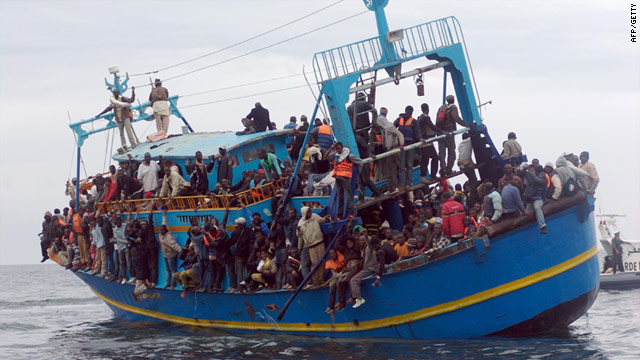Even in the historical era of near-open borders, migration was not free of cost. But the main costs of international migration were similar to the costs of intranational migration: the cost of transporting one’s person and belongings, and of finding work, lodging, and sustenance at one’s new home. Legal restrictions on migration imposed no financial cost. At some immigration checkpoints, such as Ellis Island, officers turned back migrants who they thought would be unable to sustain themselves, but they did not charge an admission fee (beyond a small fee to cover administrative costs). So migrants simply had to demonstrate that they had enough money to take care of themselves for a few days while they looked for a job, rather than pay a huge fee to the officers.
Today, legal travel costs are quite low. One can get a one-way flight between diametrically opposite corners of the world for well under $2000. This is far from a negligible amount of money for the world’s poorest people, but it’s something that people above the very lowest rungs of poverty could probably access in loans. Particularly given the huge place premium, it seems like people would be quite willing to lend money to finance journeys, and travel costs wouldn’t be a bottleneck. For migrants with more assets back home, moving costs could be greater insofar as they may need to dispose of their assets before moving, but again, this cost is a small proportion of the migrant’s net worth. (Two somewhat related posts of mine: factors that would constrain migration if borders were opened quickly over a short span of time, and selection effects for migrants: some a priori possibilities. The latter discusses the way that moving costs could lead to selection effects for migrants).
At present, however, legal migration is a very difficult option for many people. Those who seek to migrate unlawfully have two options: either enter on a tourist visa or temporary work/study visa and then overstay it, or smuggle oneself in illegally. But temporary work/study visas are pretty hard to get too. Consular officers are quite cautious about granting tourist visas to people who seem like they are trying to use it as a pretext to migrate, and the tourist visa option is also thereby rendered unavailable to many potential migrants (in fact, consular officers have an extraordinary level of discretion here and little accountability to the visa applicants they deny, see my co-blogger John’s posts on the subject here, here, and here). Moreover, coming in on a tourist visa leaves a legal trail for the migrant, making it potentially easier for authorities to track the migrant down. Thus, the incentive for people to cross borders surreptitiously, despite the considerable physical discomfort and danger. In the United States, somewhere between a third and a half of migrants who are not currently in legal status are people who actually crossed the border without authorization.

African migrants stranded on a boat coming from Libya wait for rescue services near Sfax, on the Tunisian coast, on June 4, via CNN
As discussed on our human smuggling fees page, the costs of smuggling oneself in illegally are nontrivial (if you’re just interested in the prices, see this Havocscope page). Costs vary heavily by source country but are generally at least ten times the legal travel costs. Illegal immigration from China or India to the United States costs in the range of $50,000. And these are the pure financial costs, not the other costs of the journey, including the physical risks. This raises a natural question: who but the very wealthy could afford such sums? After all, most of the people who migrate illegally aren’t well-off. Where are they getting this money?
The most obvious answer (which is a non-answer of sorts) is that most people don’t. The legal barriers to migration are successful in keeping a significant fraction, probably a vast majority, of potential migrants, out. This is exactly why we are far from open borders and it’s such a radical proposal. As my co-blogger David Bennion wrote:
The immigration system isn’t broken, it is working as intended. But it needs to be broken; we need to break it.
Nonetheless, enough people do migrate in this manner for the phenomenon to be worth understanding. As I discussed in my blog post on snakeheads such as Sister Ping, a fair number of people migrate all the way from China to the United States in cramped ships, paying the huge human smuggling fees.
I outline three interconnected answers below. Here’s the list:
- Personal and family savings back home
- Financing by family members already in the destination country
- Loans from outside the family
Continue reading How can migrants afford huge smuggling fees? Three answers
